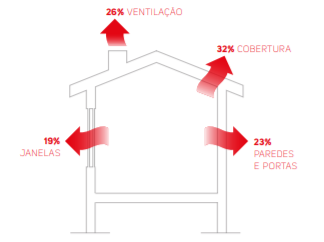Thermal insulation is an important parameter of energy efficiency in a home. In addition to providing users with a greater sense of comfort, its application represents a barrier that allows to reduce heat losses and gains.
HOW TO INSULATE YOUR HOME THERMALLY?
Currently, there are minimum requirements required in the construction of new houses or refurbishments, values that have been revised since 1990, the year in which the first regulation related to the thermal of buildings was published.
The applicable values depend on the region of the country and, consequently, the climatic zone of your home. By ensuring a good thermal insulation of your home, you are increasing its thermal inertia, that is, guaranteeing a better thermal response of the building to temperature peaks, allowing to conserve interior temperature and improving thermal comfort.
Thermal insulation can be applied to walls, floors, roofs and even plumbing, to do this you should use the services of a civil engineer, architect or independent qualified expert, so that you can be advised on the best solutions to implement in your home.
Moradia sem isolamento
Se a data de construção da sua casa é anterior a 1990, provavelmente não tem isolamento térmico.
Aplicação de isolamento
A aplicação de isolamento pode ser realizada nas paredes, pavimentos e coberturas, existindo diversas soluções no mercado.
Poupança
Com a aplicação de isolamento térmico nas fachadas e coberturas é possível reduzir em 50% as perdas térmicas, melhorando o conforto térmico.



 Simulador Simples
Simulador Simples Simulador Avançado
Simulador Avançado